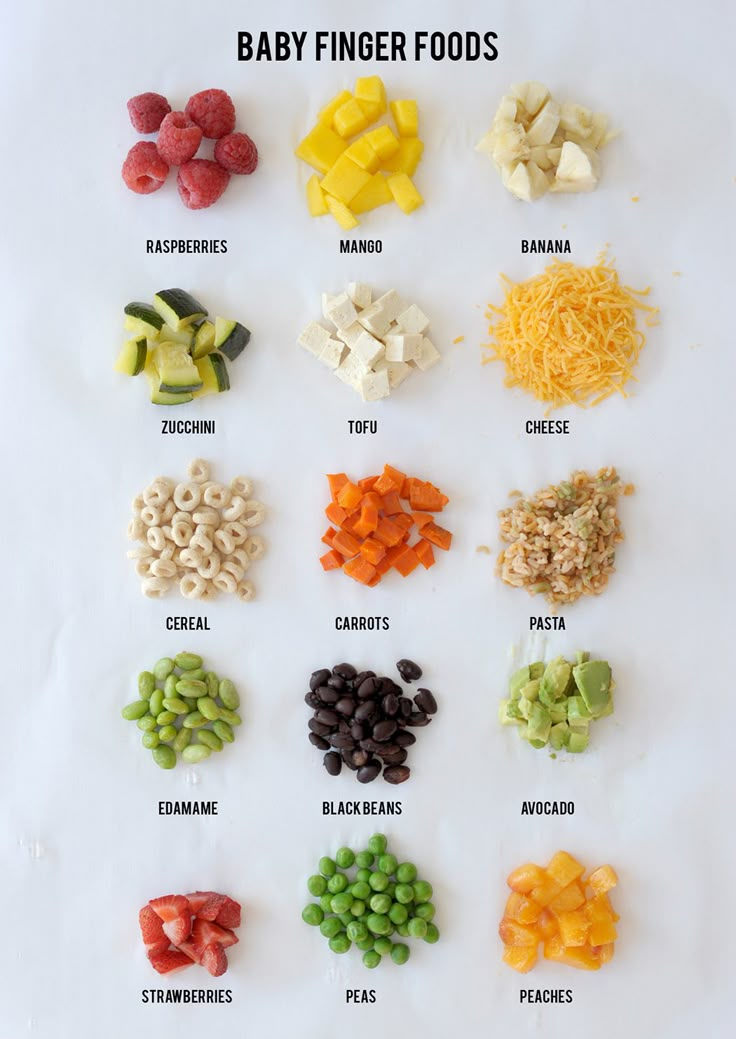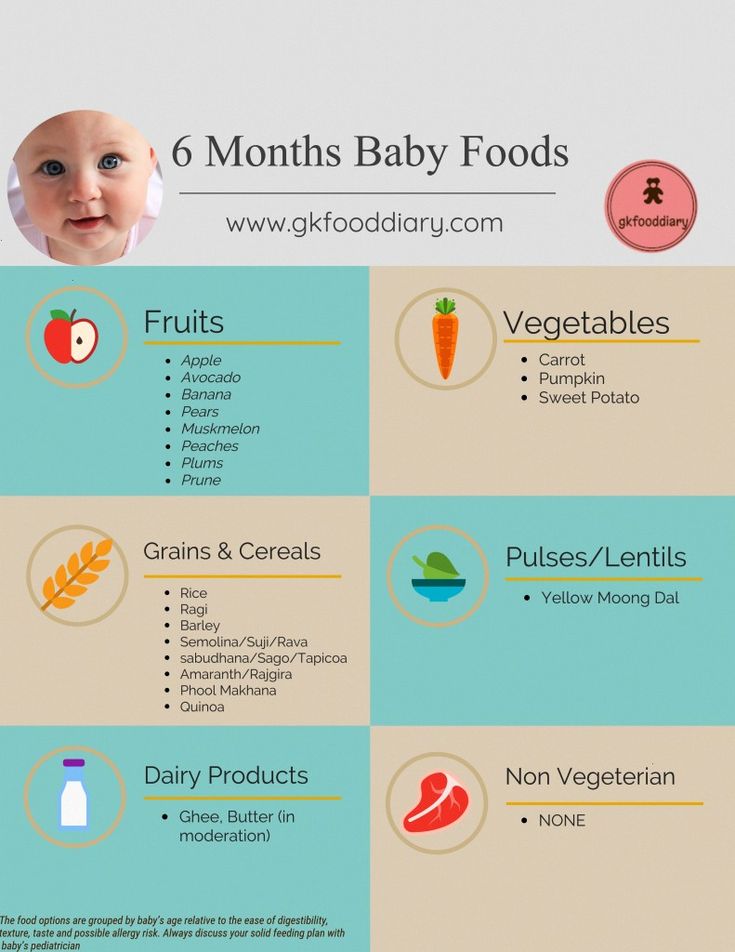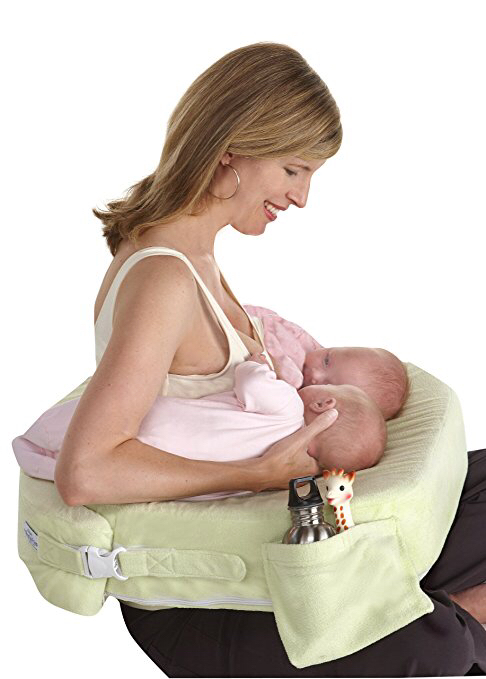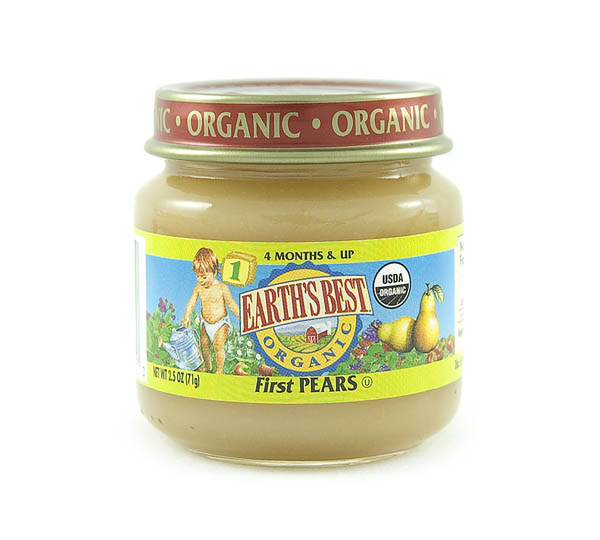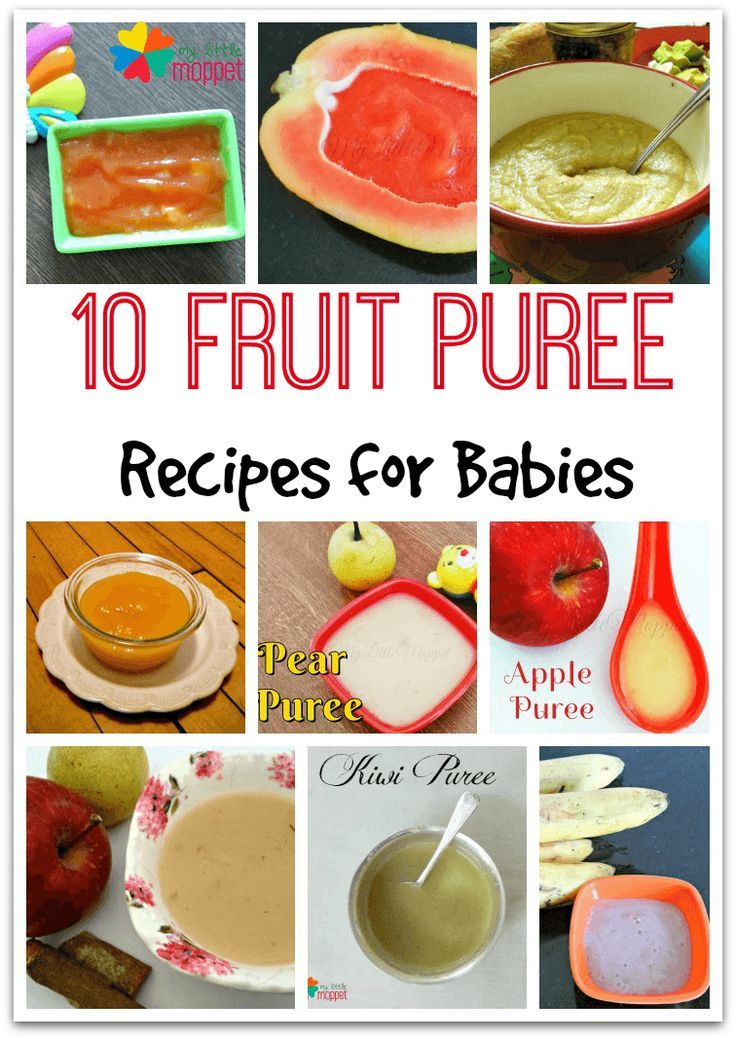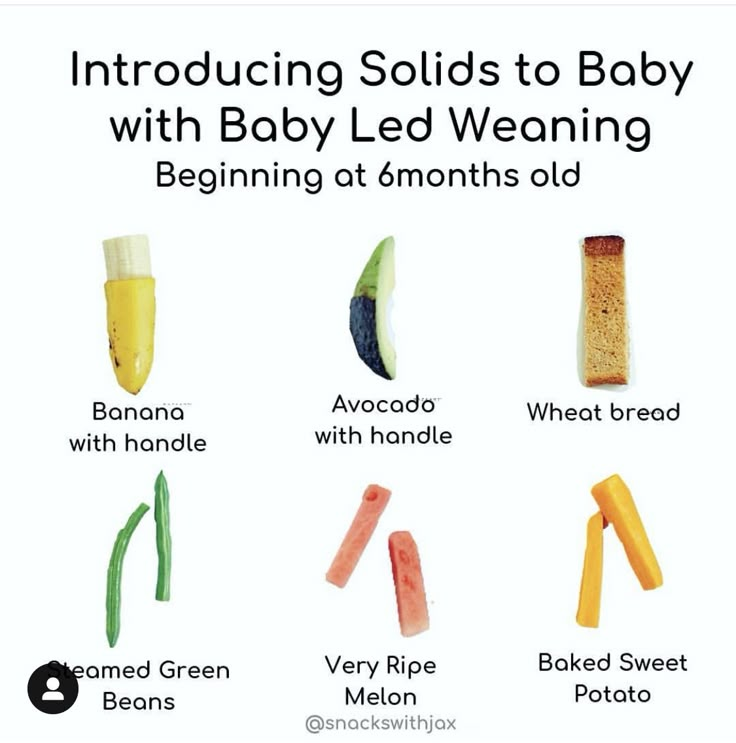First table foods to try with baby
Best Finger Foods for Babies: The Ultimate Guide
How exciting that your baby is about to graduate from mushy foods to finger foods! This is a big step in your little one’s development. However, you may be wondering when’s the right time to start finger foods, and how to tell that your baby is ready. We’ll answer all these questions and more, plus give you a list of the best finger foods to introduce to your baby first.
Introducing Finger Foods to Your Baby
So, when can babies eat finger foods? You can start to give your baby finger foods around the time they’re able to sit up independently and can bring their hands to their mouth. This may happen between the ages of 8 months old and 9 months old, but your baby may be ready a little sooner or later than this time.
Around this time, you may also notice that your baby is developing their pincer grasp and may be making chewing motions. These are both great indications that your baby’s ready for finger foods. Moreover, using their fingers to pick up foods will further develop your baby’s fine motor skills.
Some parents who adopt the baby-led weaning approach may start offering finger foods to their infants as early as 6 months old. This method skips spoon-feeding with solid foods and instead lets your baby take the lead in self-feeding with finger foods. Some believe this approach can decrease fussiness when it comes to introducing new foods, including finger foods, to your baby. Speak to your child’s healthcare provider if this method is something you’d like to try.
Giving your baby finger foods can help your little one learn to feed themself, just one step toward gaining independence. Self-feeding can be great fun for your baby. Even if much of the food doesn’t end up in your baby’s mouth, the fact that they’re exploring this new frontier is an accomplishment to be proud of.
First Finger Foods for Your Baby
As you begin choosing finger foods for your baby, check out the following ideas:
Steamed veggies like sweet potatoes, potatoes, carrots, green beans, peas
Soft, ripe fruits like bananas, berries, peaches (peeled), mangoes (peeled)
Whole-grain breakfast cereals (without nuts, clusters, or chunks)
Whole-grain pasta (cooked well)
Whole-wheat bread
Whole-grain crackers or wafers like teething biscuits
Soft meats like chicken
Cheese (mild)
Scrambled eggs.

Be sure that any of the above finger foods are cut into small pieces. You don’t want your baby eating a piece that’s too big to swallow. And, make sure to watch them while eating.
Finger Food Safety
During this time babies are more likely to swallow foods without chewing them, whether they have a few baby teeth coming in or they have no teeth. Avoid giving any finger foods that require a grinding action to chew (this type of chewing is typically mastered around the age of 4), as these may pose a choking risk. Offer finger foods that are soft, easy to swallow, and broken or cut into pieces that your baby cannot choke on. A good rule of thumb is that soft and mushy finger foods are safe for your baby. Small, round, coin-shaped, hard, chewy, crunchy, slippery, or sticky foods may lead to choking. Here are some foods to avoid offering your baby when they start on finger foods:
Peanut butter (in chunks)
Meat (in chunks)
Cheese (in chunks)
Raw veggies (in large chunks or round shapes), including celery sticks, carrot sticks, baby carrots, cherry tomatoes, and peas
Raw hard fruit (in large chunks or round shapes), including apples, pears, and grapes
Nuts (whole)
Seeds
Popcorn
Chewing gum
Candies (hard, gooey, or sticky)
Hot dogs or meat sticks.

There are ways you can still give some of the above foods while making them easier to eat and less hazardous to swallow. For example:
Grapes or cherry tomatoes, cut in half
Creamy peanut butter spread thinly on whole-grain bread that’s cut into small squares
Hot dog, cut lengthwise and then cut into small 1/2-inch pieces.
Note on Food Allergies
Medical experts once recommended that parents avoid feeding their babies eggs, fish, and peanut butter since babies may be allergic to these foods. However, it’s now recommended that you introduce these foods early—while keeping a close watch for any reactions—since this approach can help reduce your child’s chances of developing food allergies. Before introducing peanut butter or peanut products, consult with your baby’s healthcare provider. Your baby is more likely to be allergic to these foods if
food allergies run in your family
your baby is known to have an egg allergy
your baby has eczema.

The Bottom Line
It’s time to introduce finger foods to your baby when you see that they’re able to sit up on their own, start bringing their hands to their mouth, and can use a pincer grasp to hold onto small items, like finger foods. This development happens around the age of 8 or 9 months old, but you may see it sooner or later in your baby.
In the beginning, you’ll want to introduce finger foods that are soft and easy to swallow, since babies at this age tend to swallow instead of chew even if they have a few baby teeth. Think steamed veggies and soft fresh fruits. You can also introduce whole-grain bread, crackers, cereal, or pasta if they’re cut into small pieces. Chicken, mild cheese, and scrambled eggs are also great options when served in small pieces.
Avoid hard foods like raw veggies and fruits, as well as chunks of nut butter, cheese, and meat. Whole nuts and seeds are not recommended, nor are chewing gum, candies, hot dogs, or meat sticks. All these items can pose a choking hazard.
All these items can pose a choking hazard.
Transitioning to finger foods is a big step in your baby’s development and independence. Letting your baby self-feed with finger foods may be a bit messy at first, but you’ll both get the hang of it. Learn more about developmental milestones for your 9-month-old baby.
13 Best Finger Foods for Baby
Introducing finger foods for baby is an exciting and nerve-racking time. Between the mess, possible allergies and potential choking hazards, it’s enough to give some parents white knuckles as they hover over the high chair. But while you should certainly exercise caution, there are lots of great baby finger food ideas that will make mealtime fun and nutritious, and let your growing child practice the important art of self-feeding.
In this article:
When can babies eat finger foods?
Baby finger food safety
How to introduce new finger foods for baby
Best finger foods for baby
When Can Babies Eat Finger Foods?
There’s no hard and fast rule in terms of when babies can start eating finger foods, says William Dietz, MD, PhD, director of the Sumner M. Redstone Global Center for Prevention and Wellness at the Milken Institute School of Public Health at the George Washington University in Washington, DC, and co-editor of the American Pediatric Association’s (AAP) Nutrition: What Every Parent Needs to Know. Rather than focusing on baby’s age, says Dietz, “the first indicator you should look for is that the baby is interested.” So how can you tell when baby’s interest is piqued? Reaching for the food as you’re feeding her, grabbing the bowl or spoon, putting the spoon in her mouth and fussing when she sees you eat (because she wants in!) are all signs your child may be ready. “Babies generally want to feed themselves,” Dietz says. “That’s a normal drive.”
Redstone Global Center for Prevention and Wellness at the Milken Institute School of Public Health at the George Washington University in Washington, DC, and co-editor of the American Pediatric Association’s (AAP) Nutrition: What Every Parent Needs to Know. Rather than focusing on baby’s age, says Dietz, “the first indicator you should look for is that the baby is interested.” So how can you tell when baby’s interest is piqued? Reaching for the food as you’re feeding her, grabbing the bowl or spoon, putting the spoon in her mouth and fussing when she sees you eat (because she wants in!) are all signs your child may be ready. “Babies generally want to feed themselves,” Dietz says. “That’s a normal drive.”
Being able to sit independently is another good clue that babies are physically ready to try finger foods, says Susan M. McCormack, MA, senior speech language pathologist at Children’s Hospital of Philadelphia and a board-certified specialist in swallowing and swallowing disorders.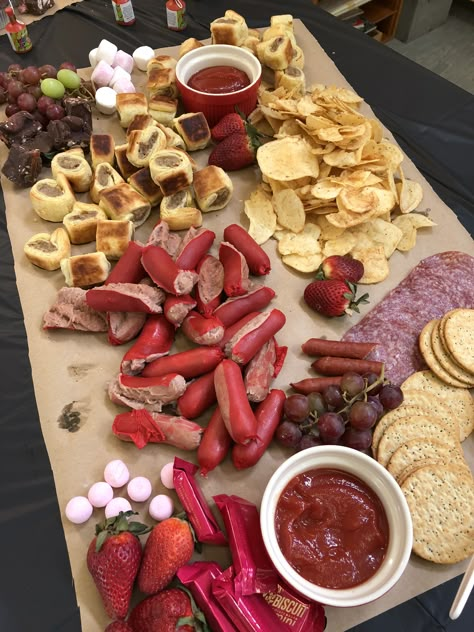 If they can sit up in the high chair, then they might be ready to try their hand at finger foods.
If they can sit up in the high chair, then they might be ready to try their hand at finger foods.
Some guides suggest waiting to introduce baby finger foods until your child has mastered a pincer grasp—the ability to pick up small objects between the thumb and forefinger—but Dietz says this isn’t totally necessary. “Initially when children start to feed themselves, they don’t have a pincer grasp,” he says. “So they’re using their whole hand and putting their hand in their mouth. And that’s fine.”
If you’re waiting for your infant to sprout teeth before moving on from purees, think again. “Babies don’t need teeth to learn to eat solids and learn to chew,” McCormack says. Those strong little gums are perfectly capable of mashing up soft solids—if you’ve ever let baby teethe on your finger, then you have some idea of just how powerful they are!
Baby Finger Food Safety
When choosing the best finger foods for baby—whether you’re starting at 6 months or 9 months—experts agree that it’s best to begin with small pieces of soft food that dissolve easily.
As your infant grows and becomes comfortable eating finger foods, you can branch out, McCormack says. “As a baby develops better tongue patterns to control food pieces as well as more mature chewing, he can better ‘chew’ the foods that break apart, like pieces of fruits and vegetables. A one-year-old can also bite off pieces of food that a 6-month-old can’t.”
Avoid giving baby finger foods that are large, sticky or don’t dissolve easily, because they’re potential choking hazards, Dietz warns. He suggests steering clear of foods like hot dogs, carrots, nuts, grapes, popcorn, candy and globs of peanut butter.
Another thing to keep in mind when you’re picking out the best finger foods for babies is that a lot of adult foods—particularly snacks—can be super salty. “Often parents will doctor a food so it appeals to their tastes, and their taste may have bigger amounts of sodium than a baby’s taste,” Dietz says. When preparing food for baby, leave out the salt whenever possible. (You can always add it separately to your portion if you’re cooking for the family).
(You can always add it separately to your portion if you’re cooking for the family).
How to Introduce New Finger Foods for Baby
When babies first start on finger foods, breast milk and formula will still be their main source of nutrition, followed by purees. You should continue to spoon-feed your child initially, “but during the feeding process, they should also be allowed to feed themselves,” Dietz says. Put some finger food on her high-chair tray and let her try to get it into her mouth in between the spoonfuls of food you’re feeding her. If she gets really frustrated, go ahead and help her out.
Most important, follow your child’s cues and “let your baby be the guide,” McCormack says. If he doesn’t respond positively, take a step back and try again later. But keep in mind that babies often crinkle up their faces when they try something new, which can look like they don’t like something, Dietz says. It can take up to 20 times before they’re used to certain foods. “Parents shouldn’t force food, but they should be persistent in offering,” Dietz says.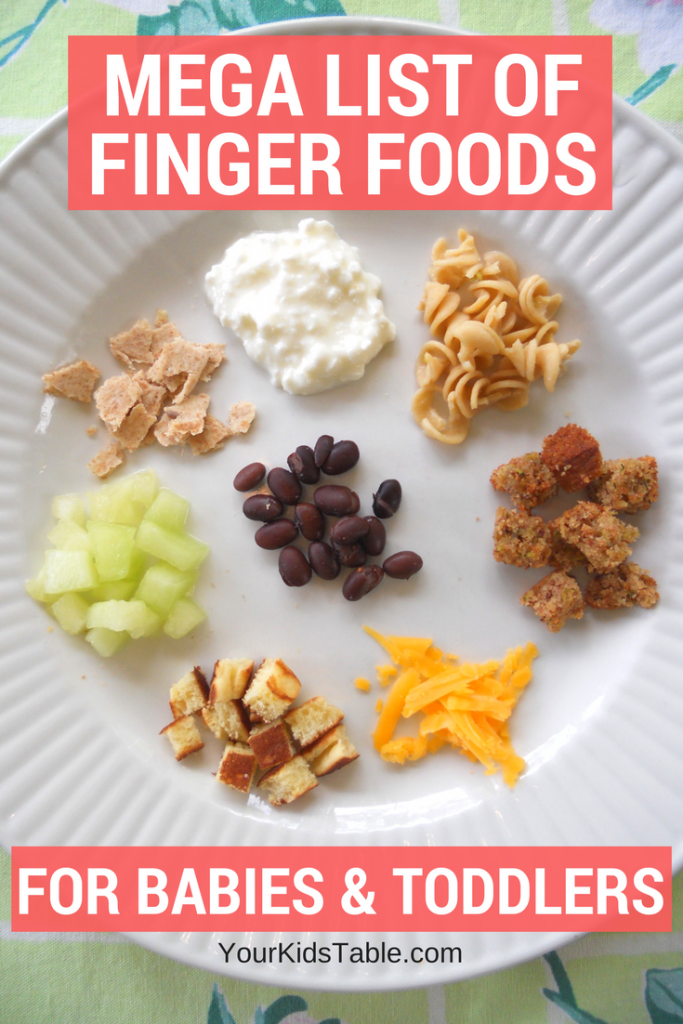
McCormack also suggests easing into finger foods by offering thicker purees with a bit of texture to them. “Try alternating bites of the smooth puree with a slightly thicker or mashed food to help your baby get used to the new textures in her mouth,” she says.
Remember, too, that this is a messy process. Parents might want to lay newspaper or an easy-to-clean vinyl tablecloth on the floor, since it’ll be a while (like, years) before your kid manages to get more food in his mouth than on the floor, Dietz advises.
Finally, never leave baby unattended while she’s eating, and keep an eye out for signs of choking. It may be tempting to hold off on introducing finger foods until your child is older, but helping baby develop this skill has multiple benefits, McCormack says, including “development of independence, fine motor skills and self-feeding skills, as well as development of oral patterns to support texture progression.” Whether you start baby finger foods at 6 or 9 months, just follow baby’s lead and let him have fun with it.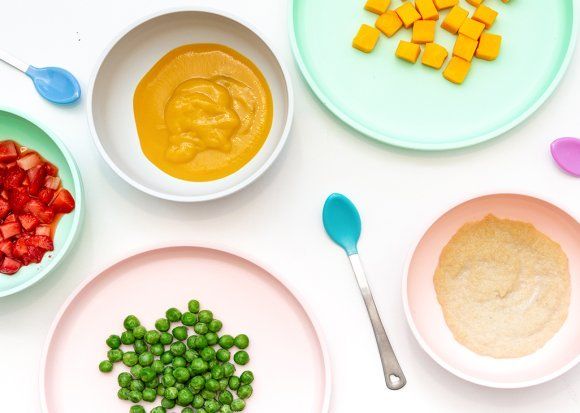
Best Finger Foods for Baby
If you’re looking for baby finger food ideas, think about options that are soft, small and easily gummed. Here are a few of the best finger foods for baby to get started—including finger foods for baby with no teeth! While the same finger foods are as appropriate for a 6-month-old as they are for a one-year-old baby, you can begin to offer slightly larger pieces that they can bite off themselves as they become more confident. Stick with these healthy options, and you’ll start baby off on the right path for healthy eating.
Image: The Bump
1. Puffs and dry cereal. Puffs and O-shaped dry cereal are some of the most popular first finger foods for good reason: They let baby practice the pincer grasp by picking up one at a time. And as McCormack explains, they also “mix well with saliva and are easy for the infant to manage in their mouth without choking.”
2. Teething biscuits and lightly toasted bread. Teething biscuits and small pieces of lightly toasted bread are another great starter finger food, since they soften quickly. Just note that some breads can turn gummy and stick in baby’s mouth; lightly toast the bread and cut into very small pieces to avoid a choking hazard. As baby gets older (around 9 to 12 months), you can offer slightly larger pieces or serve bread topped with mashed banana or avocado, or a super-thin layer of hummus or peanut butter.
Just note that some breads can turn gummy and stick in baby’s mouth; lightly toast the bread and cut into very small pieces to avoid a choking hazard. As baby gets older (around 9 to 12 months), you can offer slightly larger pieces or serve bread topped with mashed banana or avocado, or a super-thin layer of hummus or peanut butter.
3. Scrambled eggs. Doctors used to advise waiting to introduce eggs, but the AAP now recommends early exposure to potentially allergenic foods. Which is great news, since scrambled eggs are an ideal early finger food! Keep your love of runny yolks to yourself for now, however, and cook those eggs thoroughly, cut into small pieces and avoid adding salt.
4. Soft fruit. Very ripe fruit is naturally soft, making them some of the best finger foods for babies. Ripe banana, peach, watermelon, raspberries, blueberries and cantaloupe cut into small pieces are all great finger food options.
5. Avocado. A rich source of omega-3 fatty acids—which can help boost baby’s brain development—avocados are, like puffs, often one the first baby finger foods, even when your little one has no teeth.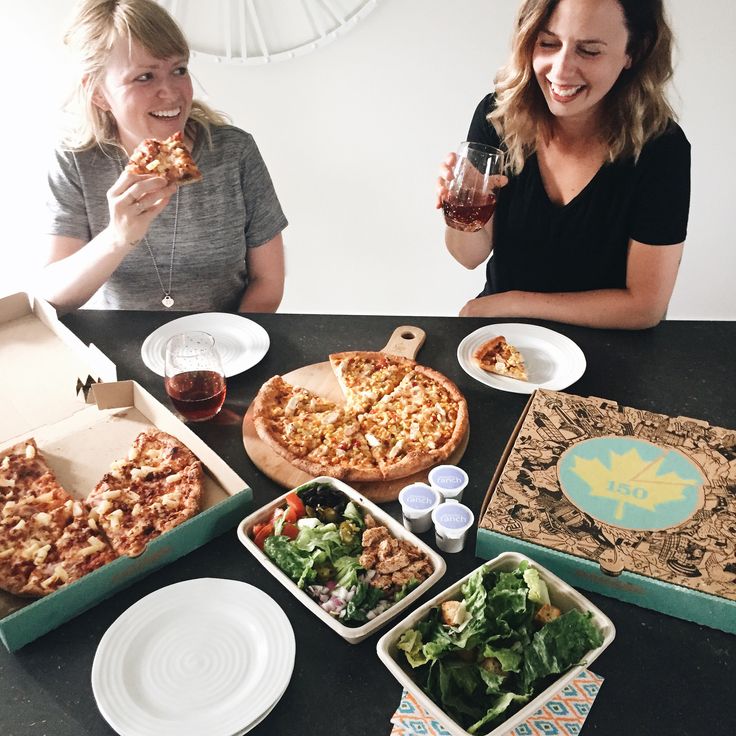 Be warned: Avocado can get messy fast, but it’s well worth it (and can result in some hilarious pics for the baby album).
Be warned: Avocado can get messy fast, but it’s well worth it (and can result in some hilarious pics for the baby album).
6. Pasta. Though recipes often recommend cooking pasta al dente, when it comes to feeding baby, you’ll want to slightly overcook it so it’s nice and soft. To start, try small pasta shapes like orzo or mini shells, or cut up fusilli or penne. Initially serve it plain, but as baby is introduced to more foods you can toss the pasta in a little butter, olive oil or low-sodium tomato sauce.
7. Tofu. Whether cooked or uncooked, tofu is a wonderful plant-based source of protein and a perfect finger food for babies. Opt for firm tofu, which is still quite soft, as opposed to soft or silken tofu, which will likely fall apart in baby’s hand and frustrate her.
8. Cooked vegetables. Though it will be a while before baby can hit the crudités platter, cooked vegetables make excellent baby finger foods. To get the most nutrients out of your vegetables, steam or roast them until soft, and, of course, cut them into small pieces. Try sweet potato, carrot, broccoli, cauliflower or beets (opt for yellow beets for less mess) to start. As baby gets bigger, you can offer steamed carrot sticks or peeled, roasted sweet potato wedges.
Try sweet potato, carrot, broccoli, cauliflower or beets (opt for yellow beets for less mess) to start. As baby gets bigger, you can offer steamed carrot sticks or peeled, roasted sweet potato wedges.
9. Cheese. If baby has shown no signs of a dairy allergy, then it’s perfectly safe to introduce soft cubes of cheese as early as 6 months. Opt for small bites of a pasteurized cheese that’s soft but not overly sticky or stinky, like Monterey Jack or cheddar.
10. Beans. Looking for more protein-rich, vegetarian baby finger foods? Try beans. Opt for canned, low-sodium beans for convenience, or soak and cook dry beans yourself to save money (they’ll freeze well too!). When first introducing beans, smash them just a bit between your fingers before serving to baby.
11. Homemade muffins. While store-bought muffins are often loaded with sugar, there are plenty of healthy muffin recipes out there. Use whole-wheat flour, sweeten with applesauce instead of sugar and add healthy ingredients like mashed banana or grated zucchini. Bake in a mini muffin tin or use a standard-size tin, and, once baked, break off into small pieces for baby.
Bake in a mini muffin tin or use a standard-size tin, and, once baked, break off into small pieces for baby.
12. Meat. After soft foods, diced chicken breast and ground beef are pediatrician-approved next-stage finger foods for baby. Just make sure they’re thoroughly cooked and cut into very small pieces.
13. Fish. Fish is another allergenic food that doctors now say can be introduced before baby is a year old. Be sure it’s thoroughly cooked, and opt for a low-mercury fish like flounder, cod or salmon. Most important, make sure to remove any tiny bones.
Please note: The Bump and the materials and information it contains are not intended to, and do not constitute, medical or other health advice or diagnosis and should not be used as such. You should always consult with a qualified physician or health professional about your specific circumstances.
Plus, more from The Bump:
Baby-Led Weaning Basics
Why Variety Matters in Baby’s First Foods
The Dos and Don’ts of Homemade Baby Food
Food for babies | Medical center "Beloved Doctor"
For the first six months, the best source of nutrition for a child is mother's milk.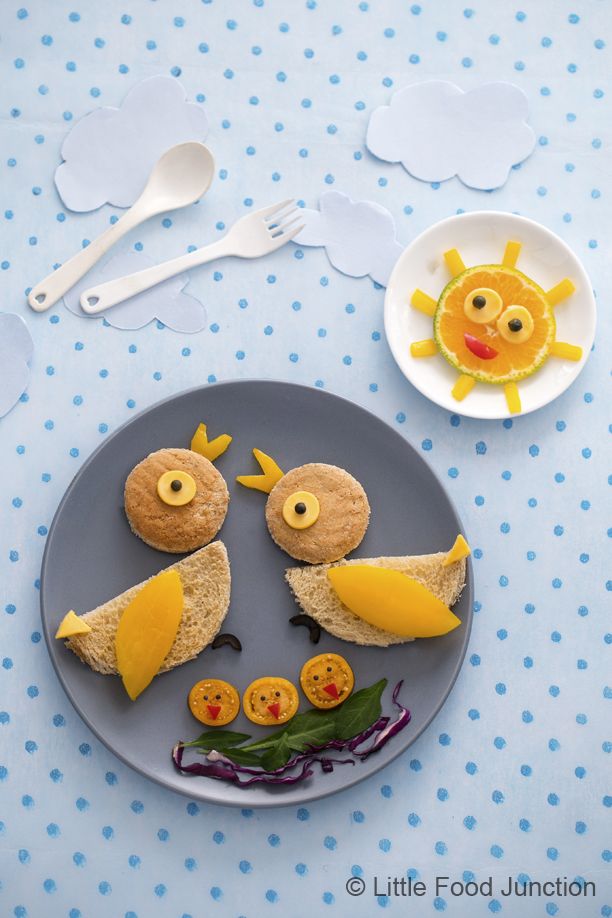 It contains all the necessary elements for the full development of the child in this age period. In some cases, when the mother cannot breastfeed, the baby is fed with special mixtures.
It contains all the necessary elements for the full development of the child in this age period. In some cases, when the mother cannot breastfeed, the baby is fed with special mixtures.
However, after that, the baby needs to expand the diet for the full growth and development of the body.
Complementary food is a range of foods that a child should receive in addition to mother's milk and formula after the first six months of birth. Foods that are denser than milk can be used as complementary foods. Complementary foods contribute to the gradual transfer of the child to the common table. However, it should be remembered that complementary foods are not the basis of a child's diet in the second half of life, the main food product is still milk and milk formulas. But already after the first year of birth, dense and thick food becomes the main food, and milk and milk mixtures become an addition to the food.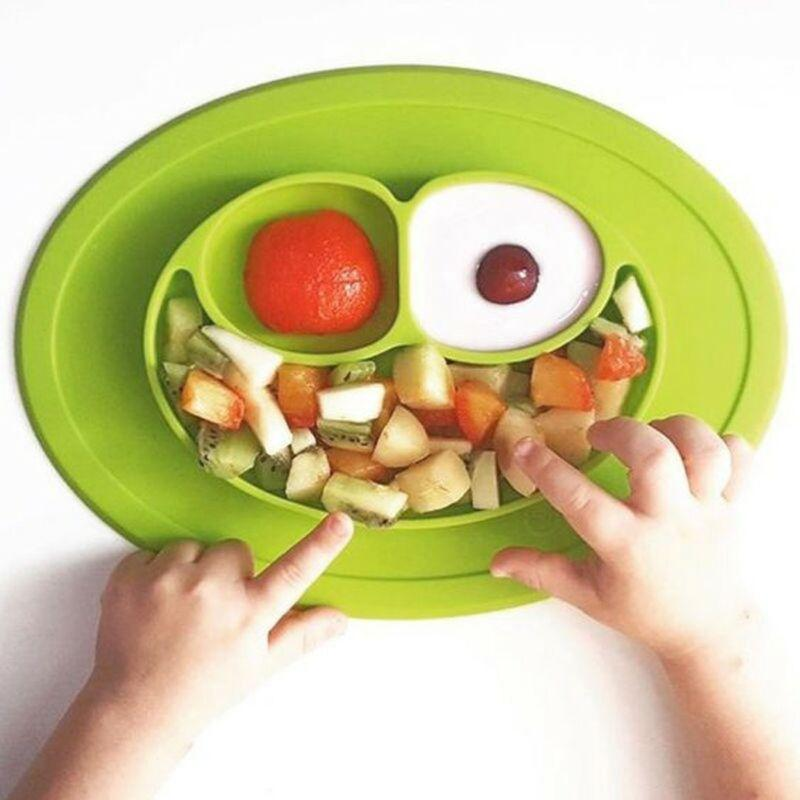
Complementary foods can be divided into two types:
- Complementary foods for the transitional period. These are products designed to meet the specific nutritional or physiological needs of the infant.
- Homemade food. These are products intended for young children, which are also included in the diet of all family members.
There is also the concept of "supplementary feeding". Supplementary feeding involves additional nutrients that are given to a child up to six months, that is, before the introduction of complementary foods. Supplementary feeding is used to correct nutrition in a number of diseases in children.
Purposes of introducing complementary foods
- Over time, the child needs additional energy, vitamins and microelements for proper growth and development. When introducing complementary foods, the child's daily calorie requirement should be taken into account.
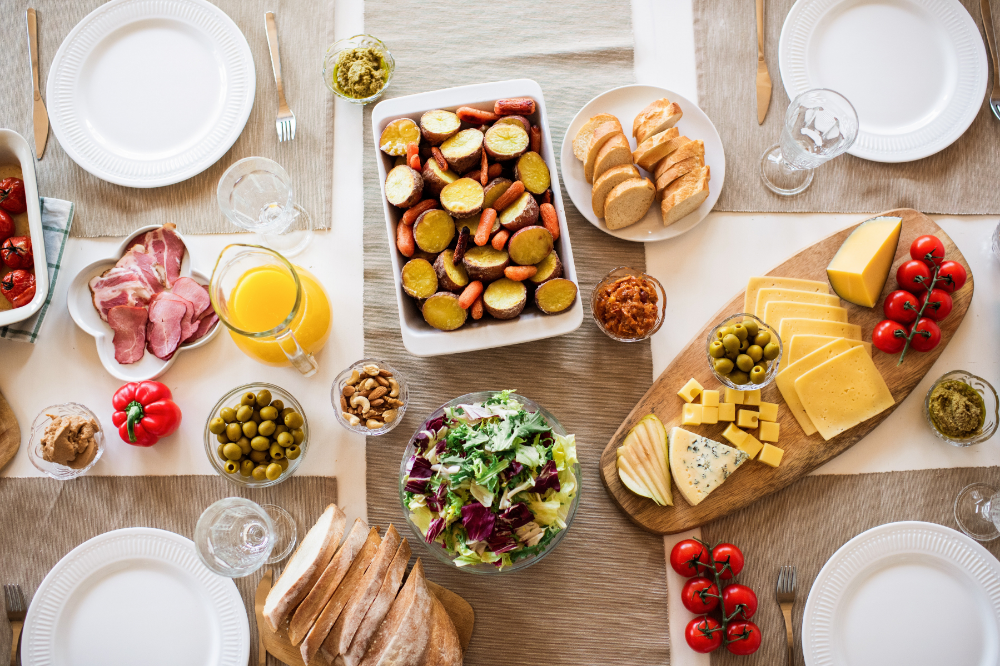 Energy is spent more intensively, but the daily food intake is limited. Therefore, it is necessary to provide the child with food with a higher density and calorie content. The volume and frequency of complementary foods is gradually increased.
Energy is spent more intensively, but the daily food intake is limited. Therefore, it is necessary to provide the child with food with a higher density and calorie content. The volume and frequency of complementary foods is gradually increased. - The transition from liquid food to food from the family table. It's over, right away the child won't be able to eat homemade food. Therefore, at 6 months, the child needs to gradually introduce foods adapted for this age. Complementary foods should be denser than breast milk or formula, but not too thick for the baby to swallow. In this case, mashed dishes are perfect as complementary foods, which can be prepared without problems using blenders and mixers. By 1-1.5 years, complementary foods are replaced with homemade food.
When to start complementary foods?
- The weight of the baby before weaning should be at least 2 times its birth weight.
- Baby stops spitting out solid food.
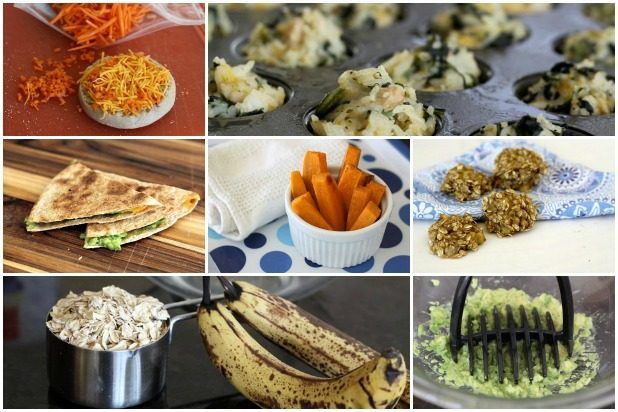 In infancy, children have an expulsion reflex of the tongue: the child automatically sticks out his tongue if something different in consistency from the usual food (milk or mixture) enters his mouth. This reflex protects infants from the threat of choking on a foreign body. If the child swallows, and does not spit out thicker food (porridge or mashed potatoes), then complementary foods can be introduced.
In infancy, children have an expulsion reflex of the tongue: the child automatically sticks out his tongue if something different in consistency from the usual food (milk or mixture) enters his mouth. This reflex protects infants from the threat of choking on a foreign body. If the child swallows, and does not spit out thicker food (porridge or mashed potatoes), then complementary foods can be introduced. - The child shows interest in food, becomes more active and opens his mouth at the sight of food, and also asks to be held at the table, trying to taste food.
- The child sits confidently.
- The first teeth appear in the child.
It is optimal to introduce complementary foods at 5-6 months.
Early introduction of complementary foods is not recommended for the following reasons:
-
- If breastfeeding is replaced with complementary foods at an earlier age, then the mother's production of breast milk may be reduced.
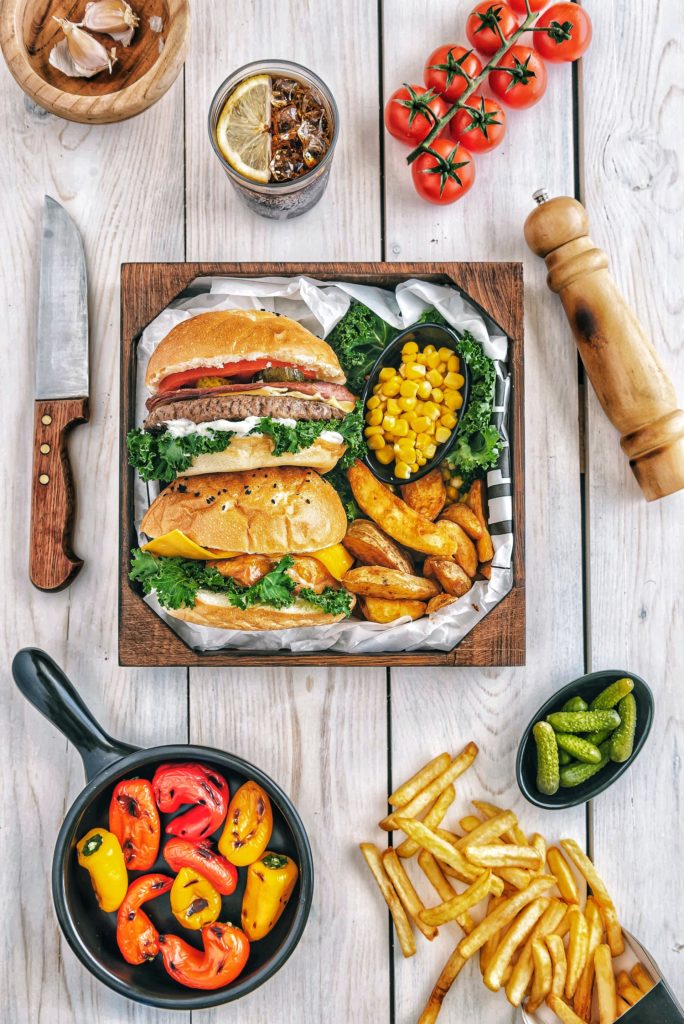 The intestines of children are not ready for the introduction of any other food. Complementary foods may increase the risk of bowel disorders, allergies, etc.
The intestines of children are not ready for the introduction of any other food. Complementary foods may increase the risk of bowel disorders, allergies, etc.
- If breastfeeding is replaced with complementary foods at an earlier age, then the mother's production of breast milk may be reduced.
Late introduction of complementary foods (after 6 months), undesirable for a number of reasons:
-
- Milk and formula cannot fully provide the baby with energy, vitamins and microelements.
-
- Chewing skills do not develop.
-
- Growth and developmental delays may occur.
- Delays in psycho-emotional development.
The timely introduction of complementary foods will strengthen the health of the baby and will contribute to its proper development.
Complementary feeding rules
1. Complementary feeding should begin when the baby is healthy.
2. Do not start complementary foods at the time of routine vaccinations.
Do not start complementary foods at the time of routine vaccinations.
3. Complementary foods should be given with a spoon, not through a nipple.
4. Until the first year of life, salt, sugar and other spices should not be added to complementary foods.
5. New products should be introduced in small quantities, gradually increasing them. Complementary foods should be started with the introduction of one product, gradually moving to mixtures of 2 or more types. If you have an allergy or intestinal disorders to certain types of products, you need to stop taking them. You may not have grown up to them yet. It is best to keep a food diary and record in it all the foods introduced into the diet and reactions to them.
6. Complementary foods should be given warm.
7. From the age of 6 months, you can sit your baby at the common table with his own set of cutlery.
8. From the age of 7 months, gradually accustom the child to drinking cups.
From the age of 7 months, gradually accustom the child to drinking cups.
9. Complementary foods should be porridge or puree. Larger and harder foods should be given later in life.
10. Diet should be varied. Cereals, vegetables, meat are the main products that should be present in the diet.
11. From 8 months you can give food containing small soft pieces. In the daily diet of a child, there should be at least 3 feedings with thick food (up to half a kilogram in total).
Complementary feeding schedule
5-6 months
This is the time to start complementary foods. You need to start it with cereals and vegetable purees, consisting of one type of cereal or vegetables. It is best to use rice, buckwheat or corn grits cooked in water. Vegetable purees are best made from cabbage, potatoes or zucchini, ground with a blender. The serving should not exceed 100-150 g.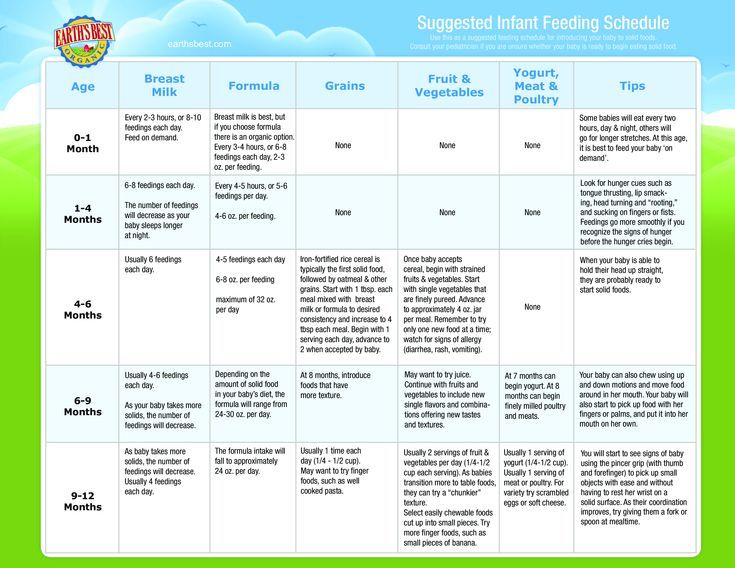
7 months
You can make puree from several types of vegetables that are already familiar to the baby. You can also cook vegetable puree soup by adding vegetable oil.
8 months
Start adding fruit purees to your diet. For starters, you can use fruits such as apple, pear, peach. Fruit purees can be mixed with porridge. However, a portion of vegetables and fruits should not exceed 100-120 g. If you gave your baby 60 g of vegetable puree, then fruit puree should also account for no more than 60 g.
At this time, you can start giving your child kefir and cottage cheese. It is best if these products are prepared at home.
9 months
Complementary foods containing meat can be started. It is better to use beef, rabbit or turkey. Lamb up to a year can cause allergies. The meat must be boiled or steamed and mashed using a meat grinder or blender. You can also buy ready-made canned meat for children. To begin with, meat puree can be mixed with vegetable puree, in which there will be less than one teaspoon of meat puree. Gradually, you can come to 3-4 teaspoons of mashed meat per day (50 g).
Lamb up to a year can cause allergies. The meat must be boiled or steamed and mashed using a meat grinder or blender. You can also buy ready-made canned meat for children. To begin with, meat puree can be mixed with vegetable puree, in which there will be less than one teaspoon of meat puree. Gradually, you can come to 3-4 teaspoons of mashed meat per day (50 g).
10 months
Meat is constantly present in the diet. One or two days a week, instead of meat, you can give your child fish in the same grated form. In this case, the first portion of the new product should be half a teaspoon. A full serving is 50 g. It must be remembered that fish can cause allergies if you start giving it to a child earlier.
Pumpkin can be added to vegetables. You can also cook borscht and offer it to your baby in the form of mashed soup. To "desserts" you can add berry puree, yogurt and cookies for children.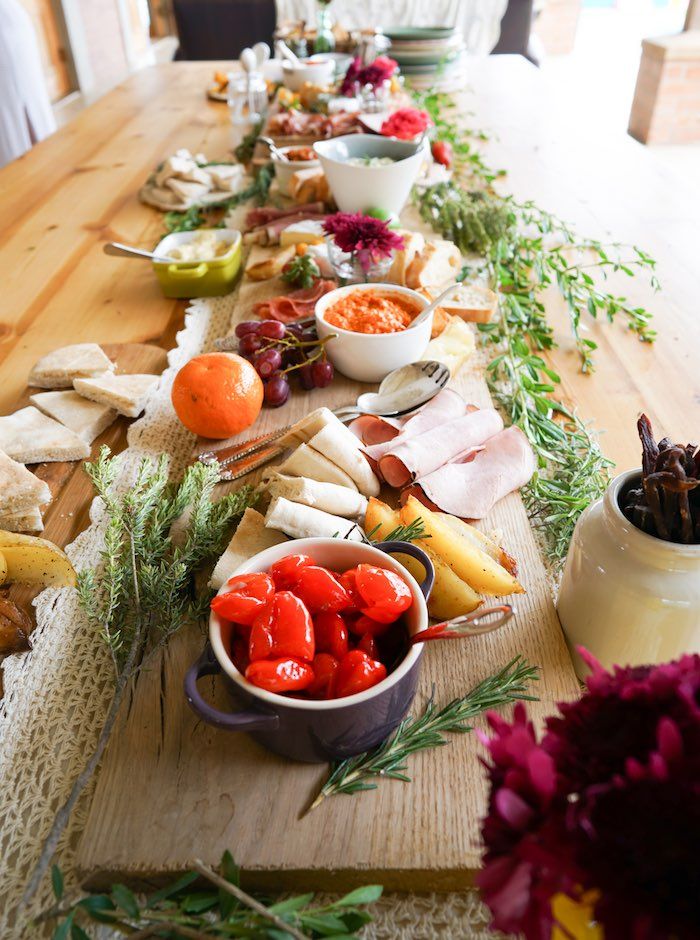
11 months
You can expand the diet of cereals. Now you can add semolina, oatmeal, wheat, barley porridge. Also at this time, you can serve puree soups with the addition of finely chopped fresh herbs grown on the window or in the garden. At the same time, you can start feeding your baby bread with butter.
12 months
Juices can be administered during this period. Juice is best prepared at home and fresh fruit and diluted with water in a ratio of 1:1. Milk can be added to dairy products. Purees and cereals can be salted using iodized salt.
What are food allergens?
Gluten
Found in oats and rye. In order not to cause an allergic reaction to gluten, you must first introduce gluten-free cereals: rice, buckwheat, corn. Other cereals, breads and biscuits should be introduced after 9 months.
Other cereals, breads and biscuits should be introduced after 9 months.
Cow's milk
Until the age of one, the body of a child cannot properly absorb cow's milk. When preparing porridge with milk, you need to use mother's milk.
Eggs
Only small amounts of yolk can be given to a child up to one year old, since a very common occurrence in children under one year old is an allergy to protein.
Bright vegetables and fruits
Vegetables, fruits and berries in red, orange and yellow colors can cause allergies. They need to be introduced into the diet very carefully, monitoring the reaction of the body.
Remember that proper nutrition during the first year of life affects the child's health and attitude to food in the future. Be careful. The child should eat those products that are recommended by experts for his age.
For detailed consultations, please contact the pediatricians of our medical center!
Let your baby be healthy and happy with tasty and healthy food!
Favorite Doctor recommends!
What to feed a child at 1 year old? Balanced nutrition for a baby: sample diet
Proper nutrition of a child in a year is an important condition for harmonious growth and development. In addition, a properly composed diet helps to strengthen the immune system. Receiving new products, the baby gradually gets acquainted with the diet. Pediatricians advise paying attention to the child's diet, its proper balancing.
Nuances of nutrition
The diet of a child in 1 year is subject to the following principles:
- should be complete, meet all the needs of the body, provide vitamins, micro- and macroelements;
- diversity. As many combined foods as possible should be present in the diet daily;
- all food must be chopped.

To properly balance the diet, it is necessary to include specialized foods. They should be designed according to the needs of the child's body in a year. If you have any doubts or questions regarding the nutrition of your baby, you can seek advice from our doctors. They will remotely select an individual diet, tell you about all the nuances of the nutrition of one-year-old babies.
Diet must not be violated
The most advantageous is the diet according to the schedule. An individual nutrition program contributes to the rapid accustoming of the child to the daily routine. Even intervals between meals will not let the baby get hungry. According to the WHO, a child's diet at 1 year old should include breakfast, lunch, dinner, and an afternoon snack.
Meal plan for the day:
| Name | Description |
| 9. | If the child gets up early, in this case it is permissible to feed an hour earlier. All other meals are shifted by an hour |
| 12.30 - lunch | Before dinner, it is recommended to take a walk, which will increase the appetite. For long walks, a snack is allowed two hours before the main meal. |
| 16.30 - afternoon snack | The amount of food is small. Eating easy |
| 19.00 - dinner | Dinner is served on the table two hours before bedtime. |
Important! When preparing food, it is necessary to refuse zazharki, fatty and fried foods. The first meat broths merge. Salt and sugar are added in a minimal amount.
Which products to prefer
WHO recommends including the following foods in the children's menu:
- dairy products.
 Children under the age of one year do not give milk in its pure form. It is replaced with breast milk or mixtures. Kefir and yogurt are introduced gradually. Their fat content should not exceed 3.2 percent. Sour cream and cheeses are allowed to be given no more than twice a week;
Children under the age of one year do not give milk in its pure form. It is replaced with breast milk or mixtures. Kefir and yogurt are introduced gradually. Their fat content should not exceed 3.2 percent. Sour cream and cheeses are allowed to be given no more than twice a week; - cereals. Porridge for a one-year-old child is given only for children. Adult coarse cereals are poorly digested in the baby's body. Allowed: oatmeal, buckwheat, millet, corn, rice porridge;
- vegetables fruits. By the age of 1, the child is familiar with apples, pears, bananas, prunes, zucchini, broccoli, carrots, potatoes. After a year, kiwi, beets, peas, apricots, beans are introduced into the diet. Legumes are given twice a week. The rest of the vegetables and fruits are allowed for use every day;
- meat fish. Hake, pollock, cod are given twice a week, low-fat meat varieties - daily;
- oil. Butter and vegetable oils are added to ready meals. If the child already chews well enough, it is permissible to smear butter on bread.
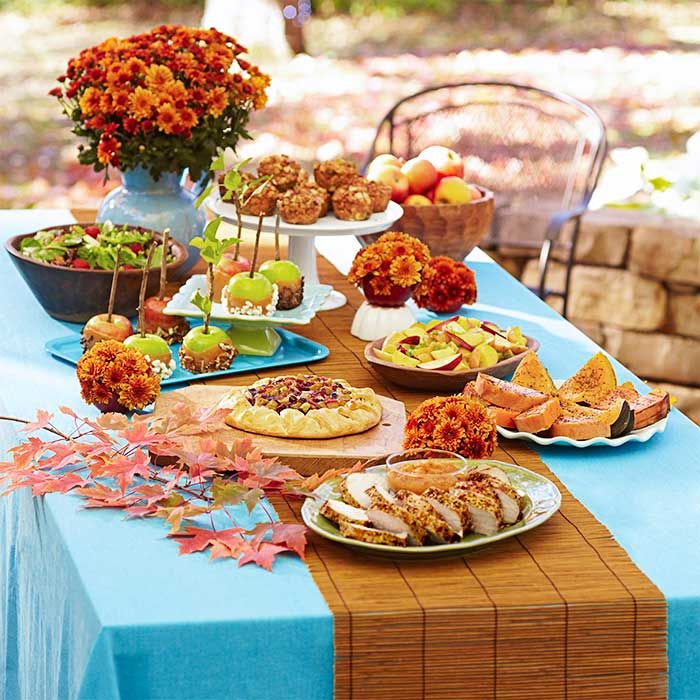 vegetable oils are chosen only unrefined;
vegetable oils are chosen only unrefined; - eggs. Up to a year it is allowed to introduce quail eggs, after a year they give chicken no more than three times a week.
Case study: One-year-old Pasha's mother made the following menu for him for the day, which she plans to feed him until he is 1.5 years old: For breakfast, porridge/vegetable dishes, cottage cheese 200 g, drink 100 ml. Lunch consists of salad - 30 g, soup - 50 g, second meat course - 50 g, vegetables / cereals - 70 g, compote - 100 ml. For an afternoon snack, mom offers ryazhenka or kefir - 150 ml, cookies, crackers - 15 g, juice, fruits - 100 g. For dinner, cereals / cottage cheese / vegetables are served - 180 g, fermented milk products - 100 ml, fruits - 50 g.
Further, the weight of the products will gradually increase with the age of Pasha. Mom made up the optimal variant of the diet together with specialists.
Prohibited products for children from the year
The list of products not recommended for baby food includes:
- any kind of sausages, sausages;
- fried food;
- smoked meats;
- exotic vegetables, fruits;
- caramel, chewing gum;
- products containing flavor enhancers, dyes; flavors.

Children are limited in food with a lot of cholesterol, nuts. The latter can cause an allergic reaction. It is not advisable to give mushrooms, as they overload the child's digestive tract. For all questions, you can contact our doctors at any time of the day. They will remotely adjust the diet and help balance it.
Norm of food per day for a one-year-old child
The total daily calorie content should not be less than or more than 1300 Kcal. However, these figures are relative, as each child is individual. Someone develops quickly, and someone vice versa. And such children may need a supplement in the diet.
For breakfast, babies should consume at least 300 ml, for lunch - 420 ml, for an afternoon snack - 180 ml, for dinner - 300 ml.
Dr. Komarovsky advises to purchase only seasonal products. In his opinion, they will be able to provide the maximum benefit for the growing body of the child.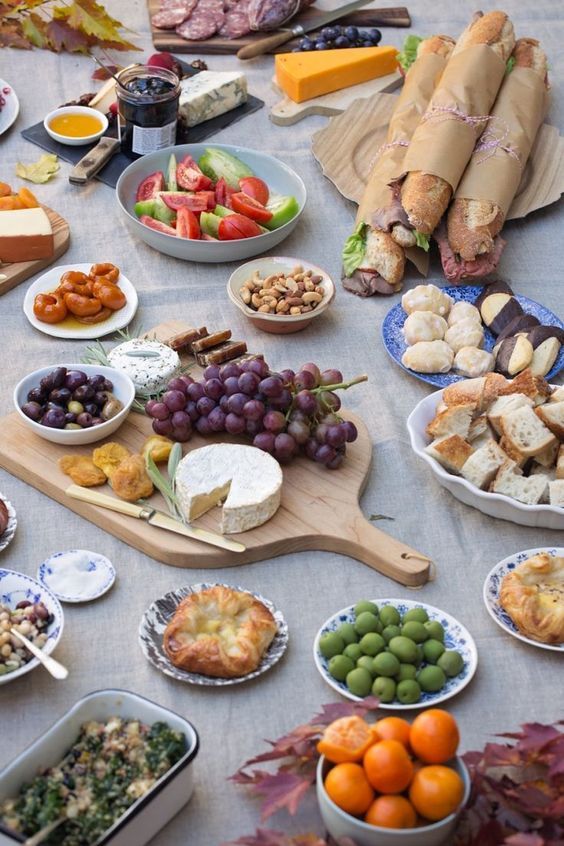
One year old baby's daily menu
Experienced doctors recommend feeding the baby up to 6 times a day. There should be 4 main meals.
Breakfast
In the morning, it is preferable to give milk porridge. Milk is diluted with water before use. Proportions for cereals: 200 ml of milk per 2 tablespoons of cereals. Twice a week it is permissible to serve an omelet from 1 egg. Prepare an omelette for a couple. You can add dill. It stimulates digestion. Wash down with compote, weak tea.
Snack
Yogurts and fruit purees are allowed here. They stimulate the production of gastric juice, digestion. A healthy snack is a baked apple with cookies. Fruit purees from jars, children's drinking yogurts are suitable.
Lunch
Lunch is the main meal. It can be only the first or second course, or maybe all together. Soups are cooked thick, rich, satisfying. Broths are prepared on boneless pulp. The first is drained, and vegetables are added to the second broth. Let's add some oil. The second offers cereals on the water, vegetables, salads, meat or fish. Spices, roasts are excluded.
Let's add some oil. The second offers cereals on the water, vegetables, salads, meat or fish. Spices, roasts are excluded.
High tea
For a small snack, cottage cheese casseroles, milk porridges, cheesecakes, cookies with compote, milk are suitable. Cow's milk is administered with caution. Start with small amounts, diluted with water. Observe the reaction, as cow's milk is considered an allergen.
Dinner
Dinner is scheduled five hours after the afternoon snack. Vegetable puree, porridge, stew with meat or fish are served. It is allowed to add a little oil to the stew.
When breastfeeding, the second dinner is allowed in the form of mother's milk. Children who are used to eating at night are gradually weaned from night feedings.
What to consider when formulating a diet
The nutrition of a one-year-old child should be in compliance with the regimen. You can also create a kind of ritual that will look like a joint table setting, decoration with bright napkins, original food serving.
If for some reason the child refuses to eat this or that product, he is not completely excluded from the diet. It is recommended to add it in small quantities, mixing with the main dish.
If the baby refuses to eat, it is recommended to shift the time. Perhaps the child did not have time to get hungry. Or you can go for a walk and work up an appetite.
All meals are served in order. Don't put everything on the table at once. In this case, the baby will be confused, will try to try everything at once.
It is necessary to introduce new products with caution, in turn, starting with small portions. At the same time, the reaction of a small organism to innovations is closely monitored. In case of allergic reactions, the product is completely excluded.
Sweets in the form of confectionery, sweets, chocolate are not offered to kids. Small amounts of honey, syrups, jams, dried fruits, cookies are allowed.
FAQ
What must be present in the menu of a child at 1 year old?
+
The diet must be present: meat, dairy products, fruits, vegetables, bread, butter. Fish and eggs are given up to three times a week.
Fish and eggs are given up to three times a week.
What are the most common mistakes parents make when preparing meals?
+
The most common mistake is a monotonous diet, consisting of the same products. It is important to try to feed your baby a variety of foods. This will allow him not only to get acquainted with new products, but also to replenish the stocks of necessary substances.
Is it permissible to include solid food in the diet if the teeth erupted a little?
+
Solid foods help form healthy eating habits. In addition, it is useful for teething. Hard pieces help form the correct bite.
Should I put my baby to sleep after eating?
+
After eating, the baby is drawn to sleep. However, putting him to bed right away is not right. If the child walked a lot, spent a lot of energy, in this case, yes, it is allowed to sleep after eating.